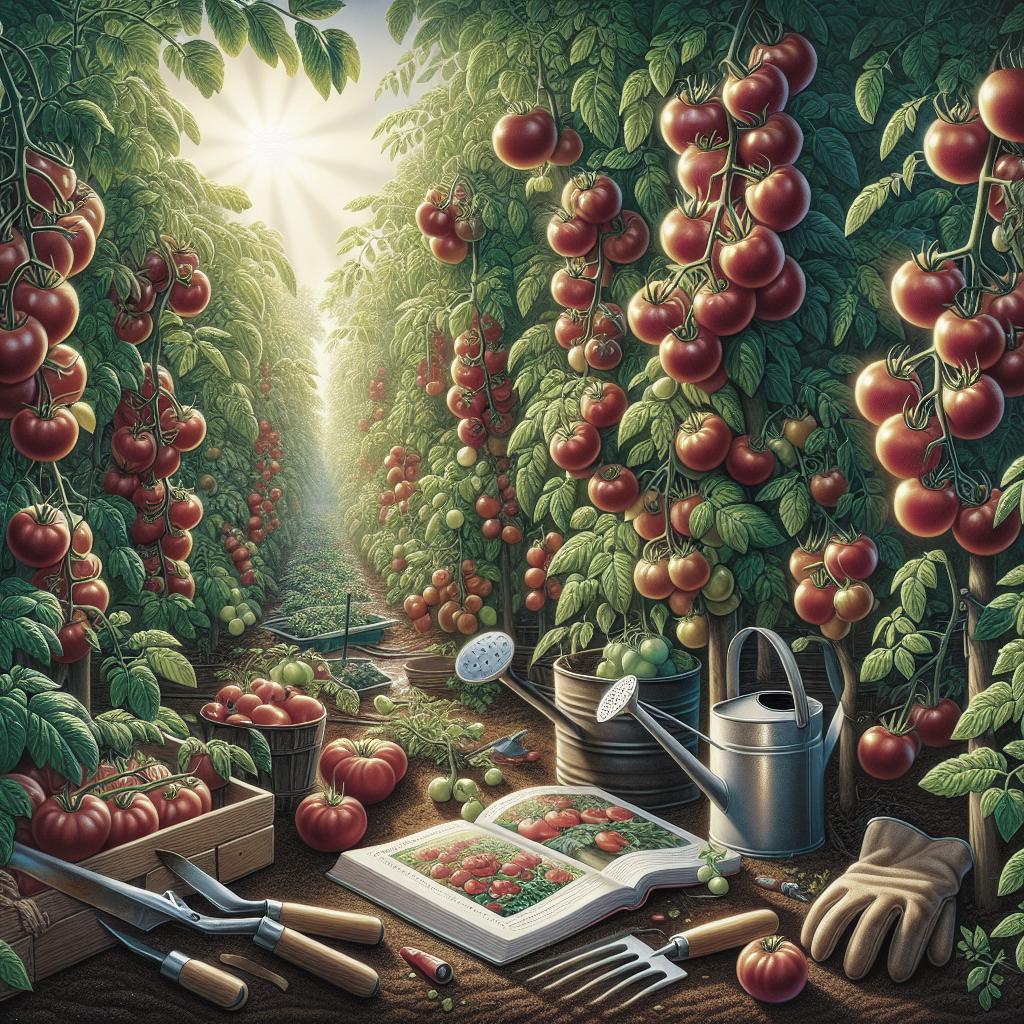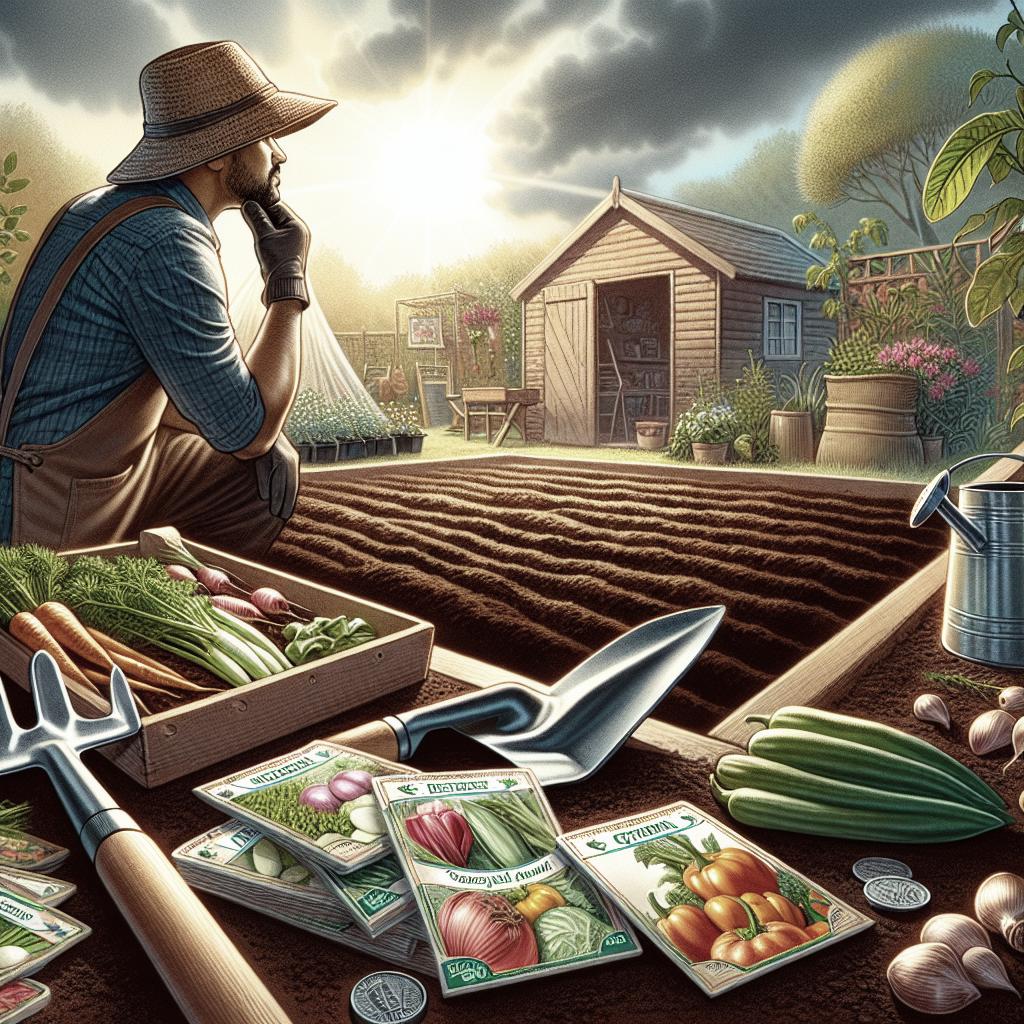“`html
How To Grow Tomatoes Successfully
Tomatoes are one of the most rewarding vegetables to grow in your home garden—they’re versatile in the kitchen and bursting with flavor. However, the path to a bountiful tomato harvest can be laden with challenges. In this comprehensive guide, we’ll delve into essential tips and tricks to nurture a thriving tomato plant. From selecting the right variety and ideal planting conditions to effective watering and pruning techniques, this blog post will provide you with everything you need to enjoy a successful tomato harvest. Whether you’re a seasoned gardener or a fresh beginner, these insights will equip you with the knowledge to grow tomatoes like a pro.
Choose the Right Tomato Variety
The journey to successful tomato growth begins with selecting the right variety. Tomatoes come in an impressive array of types—each suited for different growing conditions and culinary uses. Determinate varieties, for instance, are bush-type tomatoes that produce fruit in a concentrated period. They are ideal for both container gardening and canning.
Indeterminate varieties, on the other hand, grow in a vine-like manner and continue to produce fruit throughout the growing season, making them a favorite for fresh consumption. When choosing a variety, consider your climate and the space you have available for planting. Additionally, look for disease-resistant varieties if you’re in an area prone to specific tomato diseases. The right selection can set your tomato-growing endeavors up for success from the start.
Choose a Big Pot
Container gardening offers flexibility and ease of management, particularly when growing tomatoes. Choosing a big pot is crucial to allowing your tomato plant’s roots enough room to grow robustly. Ideally, your pot should be at least 18 inches in diameter and 24 inches deep to accommodate the root system and support the plant’s growth.
Moreover, a larger pot retains more soil and moisture, reducing the frequency of watering and helping your tomatoes thrive. Ensure that the pot has adequate drainage to prevent waterlogging, which can lead to root rot. By giving your plant room to grow, you’ll promote healthier development and increase your yield of delicious tomatoes.
Grow in Direct Sunlight
Tomatoes are sun-loving plants that require full sunlight to thrive. Aim for at least 6 to 8 hours of direct sun per day, as sunlight is essential for photosynthesis, which fuels the growth process and influences the sweet flavor of your tomatoes.
Position your tomato plants in a south-facing area if possible, and avoid over-shading by ensuring no obstructions hinder the sunlight from reaching them. In regions with particularly hot climates, consider providing some afternoon shade to protect the plants from scorching while still allowing plenty of light exposure.
Create Air Circulation
Air circulation is an often-overlooked but vital aspect of growing healthy tomatoes. Good airflow around your plants helps prevent fungal diseases such as blight and powdery mildew, which thrive in moist, stagnant conditions.
Space your plants adequately apart and avoid overcrowding to ensure proper air movement. Additionally, you can strategically prune lower leaves and branches that obstruct airflow, thereby promoting a healthier environment for your tomatoes.
Provide Healthy Soil
The foundation of any successful tomato plant is healthy, nutrient-rich soil. Begin by selecting a good-quality potting mix or preparing your garden bed with well-composted organic matter. The soil should be light, well-draining, and rich in essential nutrients such as nitrogen, phosphorus, and potassium.
Conduct a soil test to understand its pH, aiming for a slightly acidic to neutral range of 6.0 to 6.8 for optimal growth. Regularly fertilize your tomatoes with a balanced fertilizer to replenish nutrients throughout the growing season for sustained plant health and productivity.
Plant at the Right Time
The timing of your tomato planting significantly influences your success rate. Tomatoes are warm-season plants, so it’s critical to plant them after the last frost date in your area when the soil has warmed up adequately.
Ciloosing to plant too early can expose delicate seedlings to cold stress, delaying their growth and making them susceptible to disease. For most regions, planting tomatoes in late spring or early summer is ideal, ensuring the growing season aligns with favorable climatic conditions for development.
Plant Stems Deep
An often-recommended technique for planting tomatoes is to bury a portion of the stem underground. Tomato plants have the unique ability to sprout roots along their stems, and planting them deeper helps establish a stronger root system.
When transplanting, remove the lower leaves and bury the plant deeper in the soil, up to the first set of true leaves. This practice supports a healthier, more stable plant and enhances nutrient and water absorption capabilities.
Water Deeply
Consistent and deep watering is crucial for tomato health and fruitful yields. Water your tomato plants thoroughly but less frequently, allowing the soil to dry out slightly between waterings to prevent overwatering and root rot.
Tip
Focus on watering the base of the plant and avoid overhead watering which can encourage fungal diseases. Early morning is the best time to water, giving plants ample time to absorb moisture before the heat of the day.
Mulch Tomatoes
Mulching around your tomato plants provides numerous benefits, including moisture retention, temperature control, and weed suppression. Organic mulches such as straw, grass clippings, or shredded leaves are excellent options.
Apply a layer of mulch about 2-3 inches thick around the base of the plants but away from direct contact with the stem to avert rot. Mulching conserves soil moisture and contributes to a stable growing environment for your tomatoes.
Don’t Crowd Seedlings
Tomato seedlings require space to grow without competition for resources. Crowding can lead to stunted growth, increased disease susceptibility, and poor air circulation. Ensure that you space your seedlings based on the variety’s requirements, typically around 18 to 36 inches apart.
Thinning seedlings early in their growth phase can prevent crowding and help individual plants establish themselves, leading to healthier and more prolific tomato production.
Provide Support
Supporting tomato plants as they grow is essential for managing both determinate and indeterminate varieties. Staking or using cages prevents plants from sprawling on the ground, where they become more susceptible to pests and disease.
Set up your support systems early in the growing process to avoid disturbing roots later on. This practice keeps plants upright, ensures better air circulation, and aids in the even distribution of fruits for ease of harvesting.
Remove the Bottom Leaves
As your tomato plants grow, it’s beneficial to remove some of the lower leaves. These leaves are often the first to show signs of fungal diseases and can trap moisture close to the soil, creating an environment for pathogens.
Pruning these leaves boosts air circulation and reduces the spread of diseases, consequently promoting overall plant health. Begin this practice when the plants are about 12 to 18 inches tall, pruning below the first set of fruit to optimize plant energy and resources for fruit production.
Prune Suckers
Suckers are shoots that grow from the axils of the plant (the space between a leaf and the stem). While some gardeners allow them to grow, suckers can drain energy from the main stem and lead to less fruitful yields.
Pruning these suckers, particularly for indeterminate varieties, directs the plant’s energy toward growing larger, more productive fruits. However, be cautious not to over-prune as this can stress the plant and reduce its productivity.
How to Harvest and Store Tomatoes
Monitoring your tomatoes for harvest readiness is key to enjoying the best flavor and texture. Harvest your tomatoes when they reach their ideal color and size for the variety you’re growing—this is usually when they are firm and fully colored all around.
Tip
If a frost threatens before your tomatoes are fully ripened, pick them green and allow them to ripen indoors at room temperature. Store harvested tomatoes at a moderate temperature—avoiding refrigeration—to maintain their flavor and texture. This practice ensures you enjoy garden-fresh tomatoes well after the growing season concludes.
Final Thoughts
| Key Aspects | Recommendations |
|---|---|
| Variety Selection | Choose based on space and climate. |
| Pot Size | Use pots at least 18” in diameter. |
| Sunlight | Require 6-8 hours of direct sun. |
| Air Circulation | Avoid overcrowding and prune for airflow. |
| Soil and Planting | Use nutrient-rich soil and plant deeply. |
| Watering | Water deeply, avoid overhead watering. |
| Mulching | Apply 2-3 inches of organic mulch. |
| Supporting and Pruning | Use stakes/cages and prune suckers & lower leaves. |
| Harvest and Storage | Pick when firm, store at room temperature. |
“`

